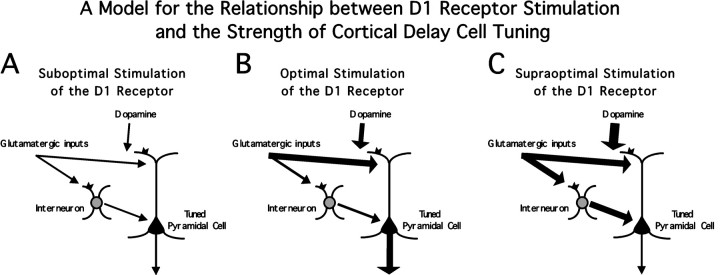Fig. 10.
Model for the relationship between D1 receptor stimulation and the strength of cortical activity during the delay of a working memory task. Dopamine, acting at D1 receptors, enhances glutamatergic inputs acting on the NMDA receptor. At low levels of dopamine release (A), these inputs are not enhanced to either pyramidal neurons or interneurons. At moderate levels of dopamine release, the glutamatergic inputs to pyramidal cells are primarily enhanced, leading to an increase in pyramidal cell delay activity (B). At high levels of dopamine release, the glutamatergic inputs are enhanced to both pyramidal cells and interneurons, leading to a reduction in pyramidal cell activity by feed-forward inhibition (C).

